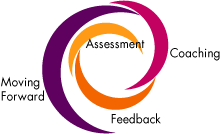Any good leader who is struggling, or is doing well and wants to do better, is an excellent candidate for executive coaching. The goals of coaching are to enhance the value of good leaders and unlock the potential of good leaders who are facing challenges.
This often comes as a surprise to those who have the preconception that a coach is just another breed of business consultant.
| Unlike business consulting, which is often focused on finding out what is wrong with an organization and fixing it, executive coaching is a positive, collaborative process that focuses on bringing out the best in a high-potential leader for the overall benefit of an organization. Sometimes good leaders just get stuck, and that’s where I come in. |
Many leaders also have communication issues that hold them back. They are accomplishing what they set out to do, but the perception among their peers and subordinates is that they are not accomplishing anything. Coaching helps show these leaders how to project their work and accomplishments into the organization, while increasing their leadership effectiveness.
In my coaching practice, I act as a neutral party for executives and other leaders. As a guide from the outside, I bring no personal agendas, and have only the best interests of the leader and the organization in mind. My leadership coaching creates a safe space for a holistic and integrative approach to work—an approach that accepts the fact that there is also life beyond work.
Here Is The Coaching Process
- An Eye-Opening Assessment
 I begin by interviewing my client, discussing self-perceptions, professional experiences and current challenges. I then conduct interviews with co-workers, colleagues, direct reports and supervisors, who provide additional feedback.I also make use of proven assessment tools, several of which may need to be completed by my clients. One of these tools, the Myers-Briggs Type Indicator, is used as a personality inventory and is useful in helping the client in understanding self and others. Next, a 360-degree assessment measures a leader’s strengths and developmental needs. I may use one or both of these tools.
I begin by interviewing my client, discussing self-perceptions, professional experiences and current challenges. I then conduct interviews with co-workers, colleagues, direct reports and supervisors, who provide additional feedback.I also make use of proven assessment tools, several of which may need to be completed by my clients. One of these tools, the Myers-Briggs Type Indicator, is used as a personality inventory and is useful in helping the client in understanding self and others. Next, a 360-degree assessment measures a leader’s strengths and developmental needs. I may use one or both of these tools. - Honest, Direct Feedback With regard to feedback, I compile the data obtained from the interviews and assessment tools and prepare a summarized report that I share with the client. Together we review strengths, impediments to performance, breakthroughs and recommendations for change. The client gains increased self-knowledge and an accurate view of the impact that they have on others.
- The Coaching Relationship The next step is to jointly develop a plan for the future, designing the alliance around the coaching relationship, acknowledging values, setting goals and determining action to be taken. In general, coaching sessions are conducted over the telephone and are scheduled weekly, allowing for three to four calls per month. Busy physicians and executives on the move find this arrangement cuts down on unnecessary travel time, allowing them to call in from anywhere in the country. Face-to-face sessions can also be arranged.
- Moving Forward The length of the coaching agreement is up to the client, with most commitments lasting six months. At the end of the coaching relationship, a maintenance plan, future goals and desired outcomes will be co-developed.If you are interested in exploring how executive coaching can help you and/or your leadership team, contact us for a no-obligation consultation at (650) 598-9935.
